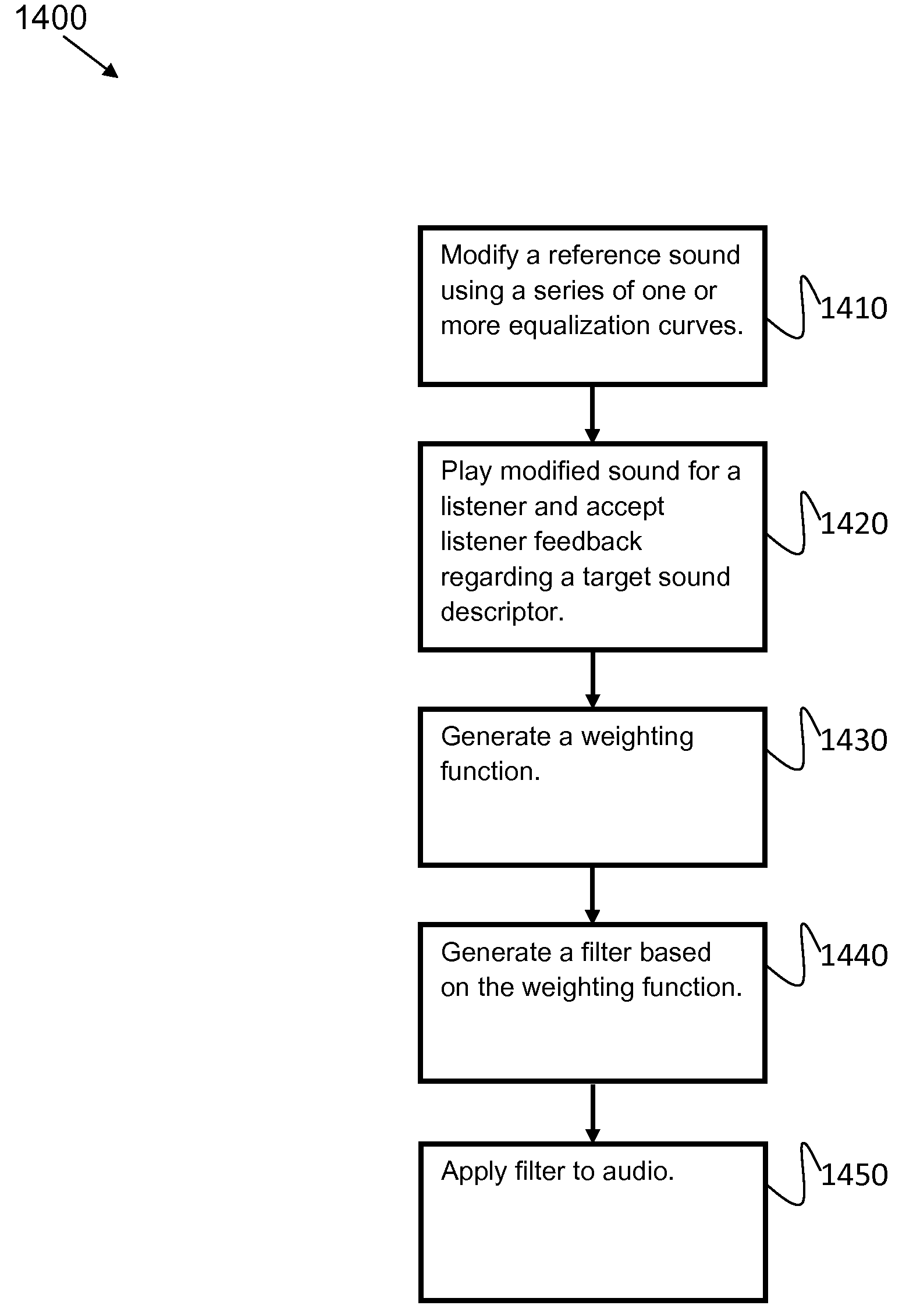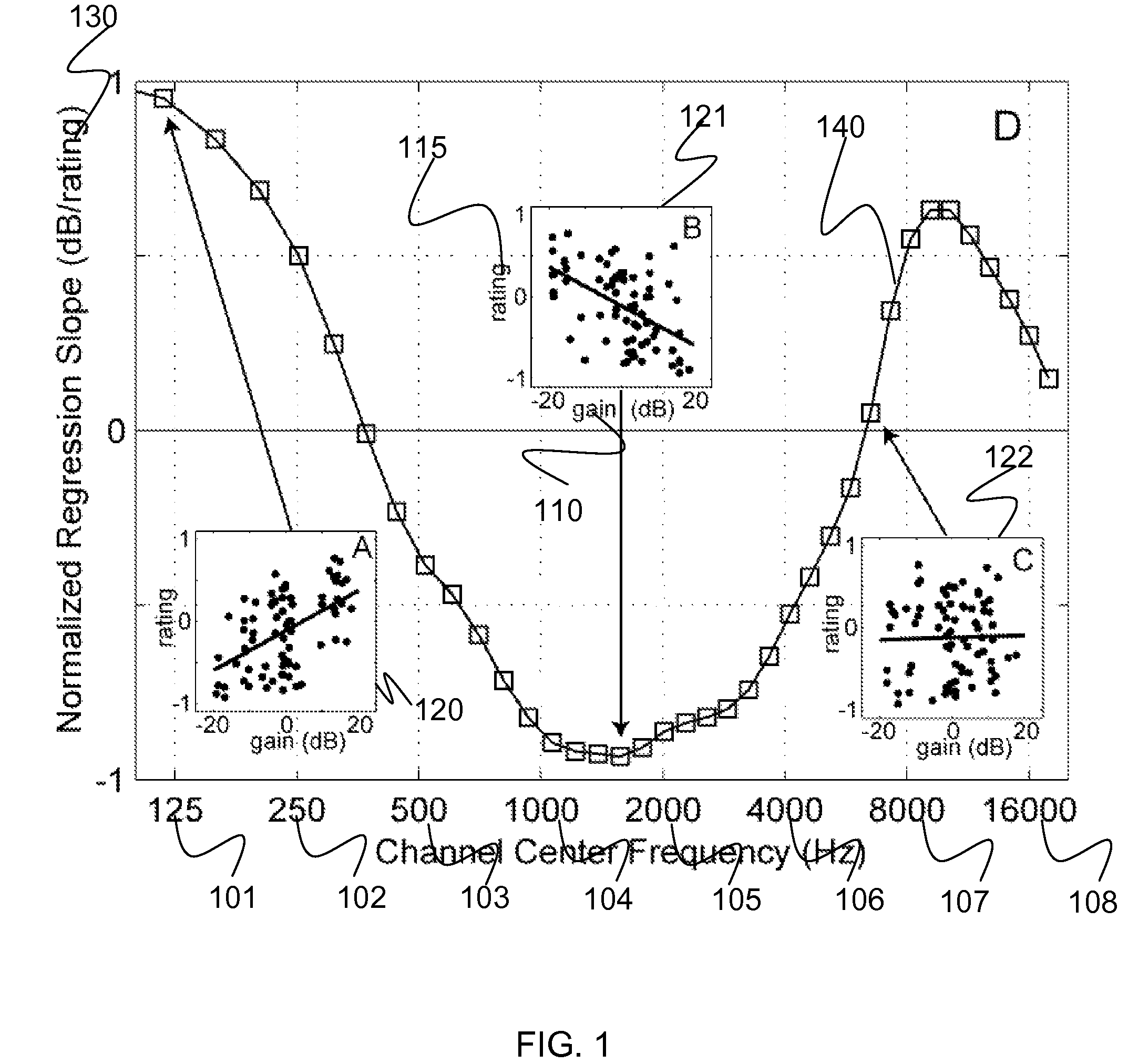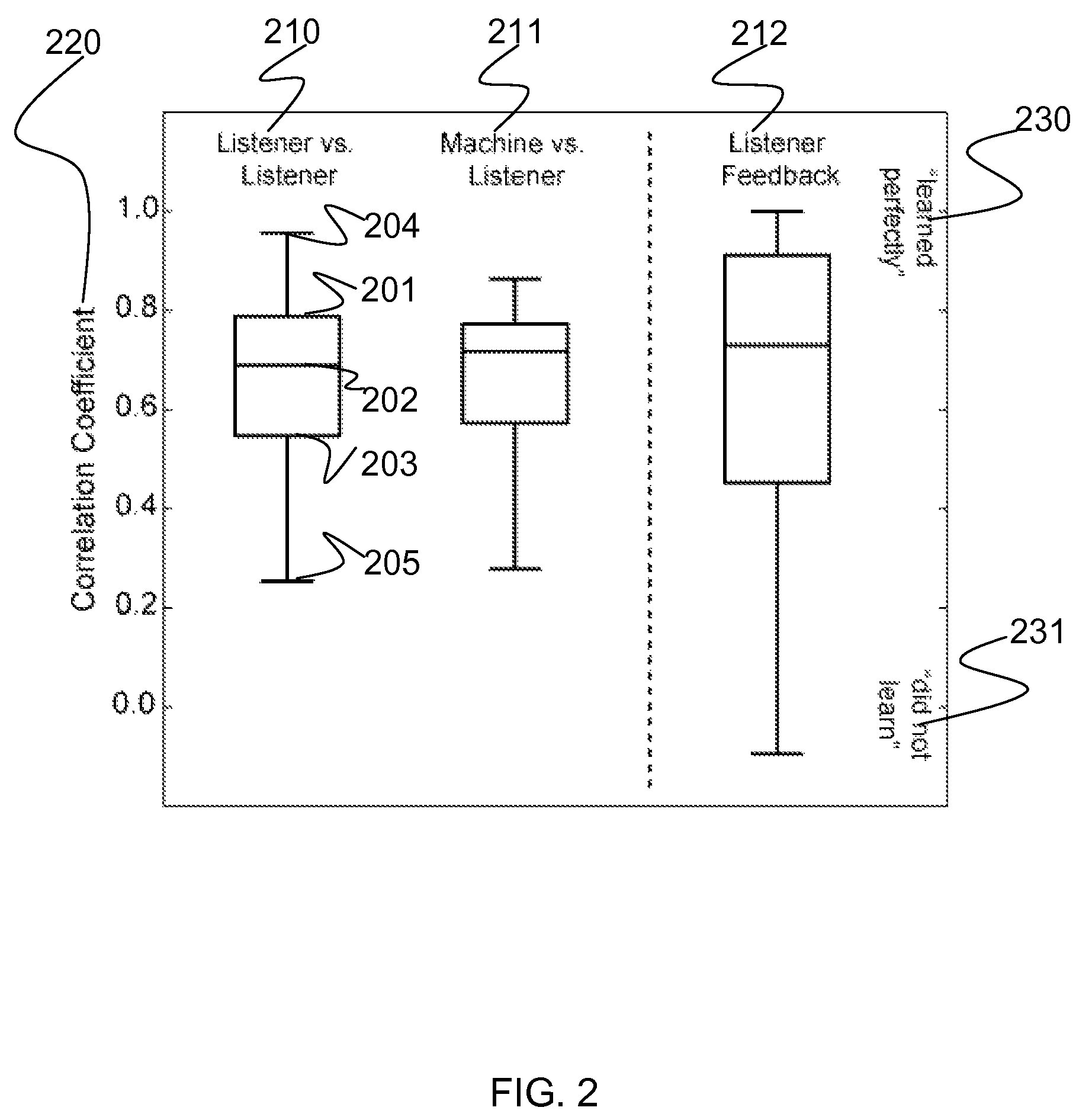Systems, methods, and apparatus for equalization preference learning
a technology of equalization preference and learning method, applied in the field of digital audio modification, can solve the problems of potential users being discouraged from using these tools, and unable to achieve the full potential of using them, and achieve the effect of maximizing the capacity of use and avoiding the disassembly and use of tools
- Summary
- Abstract
- Description
- Claims
- Application Information
AI Technical Summary
Benefits of technology
Problems solved by technology
Method used
Image
Examples
Embodiment Construction
[0028]Certain examples provide methods and systems for hearing-aid fine tuning that maps language-based descriptors to frequency-gain curves (FGCs). Listeners with hearing loss rate sound samples varying in FGC characteristics according to how well they matched common descriptors. Weighting functions are computed by evaluating the relationship between these ratings and gain values on a band-by-band basis. These functions are highly replicable despite variable ratings, reach asymptotic performance quickly, and are predictive of listener responses. While there are some global similarities about how descriptors mapped to FGC shape, there are also considerable differences in the specifics of that mapping.
[0029]Although the following discloses example methods, systems, articles of manufacture, and apparatus including, among other components, software executed on hardware, it should be noted that such methods and apparatus are merely illustrative and should not be considered as limiting. ...
PUM
 Login to View More
Login to View More Abstract
Description
Claims
Application Information
 Login to View More
Login to View More - R&D
- Intellectual Property
- Life Sciences
- Materials
- Tech Scout
- Unparalleled Data Quality
- Higher Quality Content
- 60% Fewer Hallucinations
Browse by: Latest US Patents, China's latest patents, Technical Efficacy Thesaurus, Application Domain, Technology Topic, Popular Technical Reports.
© 2025 PatSnap. All rights reserved.Legal|Privacy policy|Modern Slavery Act Transparency Statement|Sitemap|About US| Contact US: help@patsnap.com



